The Haydau Convent 1000 years of history Translation: Walter Knospe, Wolfgang Nellen
723 The chapel of Haydau was built by Bonitatius, (not officially documented)  | 723 | Bonifatius cuts down Donar's oak of Geismar
| | 724? | Chapel "in der Heide" on Kappelberg (Bonitatius), town of Fritzlar mentioned for the first time. | | 1214-38 | The castle of Spangenberg is built by the knights of Treffurt-Spangenberg. | | 1231 | Saint Ellisabeth from Marburg and Gertrud from Leimbach met in Wetter, on November 17th, St. Elisabeth dies in Marburg, 24 years: Elisabeth's church.
| | 1232 | Elisabeth's brother-in-law besieges and conquers Fritzlar. Destruction, especially in Peter's Cathedral, supported by Knight Friedrich of Treffurt.
| The "true" history is unknown. But we may suppose certainly Morschen existed before the year 500 from Christian era- the former names Mursna, Mornaha, Mursine, Morsne and Mursenaha (in the time before 800 to 1000) show it: all names mean that there was a water which can be concluded from the ending "aha", because these and similar endings name the oldest kind of settlement. In 723 Bonifatius cut down Donar's oak near Geismar/Fritzlar. Fritzlar is first documented in 724. Bonifatius made his way through the valley of the Fulda river across Morschen to Thüringen. Names of open fields remind of him near Malsfeld and Adelshausen. Stubbornly, the oral tradition that he founded the chapel "in der Heide (Haydau)" on the Kappelberg (Kappellenberg) is maintained. Surely. it was him or one of his monks who did it. This chapel later became the nucleus for the nearby convent of Haydau. This is probably the reason why Morschen-Haydau later belonged to the convent of Fulda though it was situated in the county of Hersfeld.
The deed of Fulda (1061):
(Translation incomplete in several passages)
"... as the abbot of Fulda l have taken over an estate from a certain noble master Irmfried and his wife Rucela. It is situated in the territory of Hessen in the so-called Maden that were ruied by the Werners (counts of "Werinheri"). Me, on my side, handed them over a county they desired. On Bingenheim castle they handed over themselves and the described county together with 30 vassals in the presence of the Bonifatius' relics and of the lawyer Gerhard without any agreement or conditions. They are now like vassals, too. They took over as fief a county that was under the rule of our monastery (Hof "Mursna") Morschen.
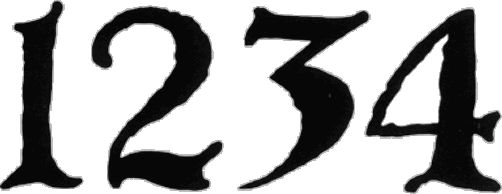
The Zisterziensers convent was built by Knight Hermann of Treffurt-Spangenberg.
1234 First document about a nuns' settlement of the Zisterzienser in Merica (in der Heide), donation of the Treffurters, first document of Aldenmorsene (and Morsne), both certified 23rd of January, 1235.
Wheh the convent Haydau was founded
In the beginning there was a wicked event...
Sometimes world history is very ugly. It was one year after the death of St. Elisabeth (in 1232 in Marburg) when her brother-in-law, Konrad of Thüringen, accompanied by his general, Friedrich of Treffurt-Spangenburg, besieged Fritzlar and could not conquer it first. The chronicle tells us:" Count Konrad went to Fritzlar, burnt the suburb, destroyed the mills, broke the bridge of stone across the Eder." But he could not conquer the city and finally he wanted to withdraw after a long siege. "But suddenly the women of the city ran on the too of the walls and showed their naked arses and called: "You are cowards!' Now the soldiers were so enraged that they stormed Fritzlar, burnt the town, Peter's church included and did not even respect the relics. In 1233 Konrad had to go to the Pope in Rome as a remorseful sinner. He was absolved from his sins and later he became a Hochmeister des Deutschritterordens. Friedrich's brother Hermann, founded the convent of Haydau for penance before 23rd January, 1235. This was certified by the archbishop of Mainz: "The chapel called merica (Heide) with its ground and land is a Fuldic tief. 23rd January, 1235 this handing over to the Zisterzienser is certified by Probst Gumbert of Fritzlar.
First document that led to the foundation of the convent Haydau
A letter from Hermann of Spangenberg-Treffurt to Probst Gumbert dated by the end of 1234:
Hermann of Treffurt and his wife greet cordially the Probst Gumbert. You have all our love. For Jesus Christ will pass judgement and everyone will be rewarded for his deeds. So it is necessary to make an effort of anticipating such a decision by acting mercifully. So we want to give you knowledge of our giving over the chapel and land called Heide to noble Gertrud of Leimbach and all devout souls living in the same religious community (Zisterzienserinnen) to do their divine Services there. We were inspired by a divine sign to act in such a way in memory of our glorious Mother of God and all the saints. Further there is no tax to pay neither to us nor our successors. Our serious will is that this chapel will have the same liberty as it had before. This means that it will be free of the jurisdiction of the church in Morschen. This is accepted by the patrons and the former priest. We therefore humbly beg: Please fulfil our promise and act in such a way that you may gain God's mercy for all good deeds that are done there in his name."
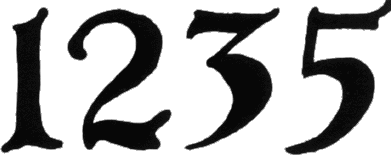
Gertrud of Leimbach, a confidante of Saint Elisabeth of Thüringen, becomes the first abbess
1248 Convent of Haydau is named, participated in the right of market of Wichten like Konnefeld and Altmorschen
1270 The vicarage Altmorschen was given to the convent by Hermann of Spangenberg-Treffurt
Below the Kapellenberg Heidau (Kappelberg) the little village Leimbach was situated. The village which has now disappeared was first named 1601. The family of knights which owned the village was rich and possessed estate all along the county. Today Leimbachshof and, opposite, the historical Leimbachborn remind of the village below "Nürnberger Straße". One of the family is mentioned in the Hessian chronicle: Gertrud of Leimbach, first abbess of Haydau, who was a friend of St. Elisabeth of Marburg. It is unknown where they first met. The way from Eisenach (Wartburg) to Marburg crossed perhaps here, like Bonifatius went from Fritzlar across Morschen to Eisenach and Erfurt 500 years ago to convert the inhabitants of Thüringen. The Gerstenberg chronicle says:
"It happened that a virtuous woman, named Gertrud of Leimbach, came to St. Elisabeth at the convent of Wetter and they talked about religious themes. Berthold, her servant, had accompanied Gertrud. This youth was very arrogant because of his clothes. St. Elisabeth blamed him for this..." He answered:" Oh, Madam, pray well for me that He may give me mercy to serve Him." Elisabeth promised this and the three prayed ardently in the convent Wetter. "So St. Elisabeth burnt all appetite for worldly things in the youth's heart and he obtained the heat of God's love." Later Berthold joined an Order.
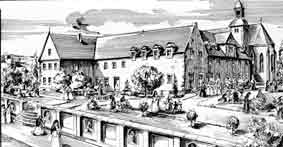

The convent burns down during a feud. Rebuilt on the old foundations.
| 1319 | Convent Haydau is burnt down | | 1320 | Built up again on the old foundations 1325 Neumorschen is mortgaged to ine convent
| | 1331 | Law court of Altmorschen in Haydau
| Many neighbours considered the convent too rich and mighty. In 1319 it was besieged and burnt down completely - but in 1320 it had been rebuilt just like it was before.
Zisterzienserinnen life in Haydau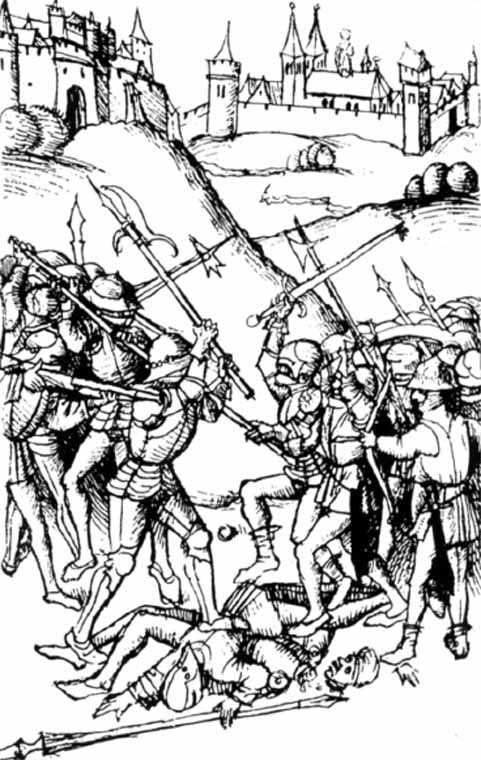 The Zisterzienser nuns settled in marshy lowlands and river valleys which they cultivated and made inhabitable. Many believed to go to heaven easier by acting so and often died very young. Reports from the convent Lehnin (founded in 1180), testify this. This convent, situated in Mark Brandenburg, is 55 years older than Haydau. According to the Benediktiner's rule the nuns of Haydau lived in a simple and ascetic way. Even the style of construction was as simple as possible: the house of God without a tower. There was only a bell on the ridge of the roof. There were no works of art or paintings in the interior. The nuns' uniforms were white equipped with two black wraps. Ora et labora, pray and work, that was their motto of life. Toady's park in former times was the garden of spices and herbs. There the nuns lectured and trained the popu!ation in gardening and agriculture. It was, in fact, the forerunner of the Hessian Agriculture Research Institute which was founded in 1857 in the dining hall (refektorium) of the convent. Spices, herbs, vegetable, lettuce and fruits were cultivated and the nuns established the first vineyards in the Fulda valley. The Frauenberg above Altmorschen still reminds of the nuns. They taught the boys of the region in a school of the convent. They cared for the ill and the old. The convent became a place of hospitality, a lodge and a shelter "for God's wages". With time the convent became prosperous and a "bank" for the citizens of the region but also for the nobles, the cities and communities. They could borrow the money they needed at good interest. The income from houses and estates served as securities. Even the market right was obtained by Haydau. The Zisterzienser nuns brought blessings and wealth to the region.

The plundering of the convent results in the ban of the church for Hessen
1386/88
Feud of Haydau: Pope's intervention, no official acts of the church in Hessen until 1387
In 1386 the so-called Feud of Haydau took place. This did not only excite Hessen but also the "world" of that time. Following the chronicle by Winand Gerstenberg the administrator of the convent, Gerlach von Leimsfeld and the archbishop of Mainz had joint forces against the count Hermann der Gelehrte (the Learned), damaged or destroyed the convent, plundered it and put the blame on the count.
So Hessen's main enemy, the archbishop of Mainz, made the Pope to excommunicate the count and his knights and to put an interdict on the whole country of Hessen, two incredible punishments!
In July 1387 absolution was given by Pope Urban III. and this was confirmed on June 7th, 1388.
Before these events Gerlach had been accused of neglecting the convent, but he put the blame on Hermann who had a difficult stand against the archbishop of Mainz. Hermann and his knights were excommunicated by Rome. The interdict meant that:
Church bells must not be rung, there were no more church acts, no christening, no marriage ceremony, no Christian buriai, no holy communion, no absolution. A Situation we can hardly imagine. No historian has yet analysed this Situation in its full extent though the document is in the Marburg archives. We know, however, that the mere existence of the country was at risk. The archbishop of Mainz besieged Kassel in 1385/86 and 1388. He destroyed Immenhausen in 1385, 1387 Melsungen was conquered by Thüringen and Rotenburg as well as other villages had to suffer heavily from these conflicts. Finally the archbishop conquered even Gudensberg (2nd September, 1387)... It was a terrible time and Haydau was the cause for a war welcomed by Mainz, Thüringen and Braunschweig.
The most important documentation, however, is Winand Gerstenberg's chronicle which describes Haydau's feud during the war between Mainz and Hessen 600 years ago (1386-1388). It describes how "Guldenberg is won and burnt down" by the troops of Mainz. The same happened to Nidenstein, Melsungen, Rotenburg, Eschwege and Sontra. The archbishop from Mainz had struck the count and conquered his land and he excommunicated him, too. Further we read how this happened: Gerlach of Leimesfeld was the administrator of the convent Haydau. The same joint forces with archbishop Adolf of Mainz against the count (Hermann the Learned, successor of Heinrich lI.), damaged and plundered it with the bishop's help. But the bishop Adolf put the blame for it on the count who was excommunicated with most of his knights and the whole country was put under interdict. But the count sent a message to Rome in which he complained on the bishop's behaviour, for he was a protector of monasteries and had a good relationship to the clergy. Later he got the absolution which is documented in the Marburg archives.
The excommunication was dissolved by Pope Urban VI. in 1387
A noble nun Jutta, princess of Hessen-Cassel, was a nun of Haydau; l only found a short note about
her ("Nun of Haydau bey Morschen"). Even her year of death is not exactiy sure. Jutta is one of count Heinrich's five documented children. Haydau must have been well-known when the count would sent his daughter there as a nun and paid with a substantial property.

The former nuns are exchanged for Markish sisters. Reform of the Convent, nuns of the Mark in Haydau
There was a time of moral decline in the rieh monasteries and convents that seduced monks and nuns to a luxurious life. Count Ludwig l always took care of the reform of church until he died in 1458. He was born in the castle of Spangenberg and interested in all affairs of the region. He was remarkable pious, a fact that even impressed the Pope who honoured him. History calls him "Ludwig the Peacefuf. He knew Haydau well. The first efforts to restore the church and re-establish the ruies of the Benediktiners came from Bursfelde on Oberweser. "Supported by sympathising abbots Ludwig l travelled aroundto reform the monasteries. There was, for example, a terrible depravity in the Augustiner nuns' convent in Eppenberg near Felsberg. Strong action was necessary because of the religious sisters1 indecent immorality. Pope Eugen IV. permitted: The nuns were exchanged by the dean of the convent St. Martin and the pious monks of the Kartäuser's Order moved in. It can be supposed that Ludwig l donated money l. In 1458 Ludwig l died on Spangenberg, it is said he had been poisoned. The chronicie of that time reported that Ludwig had been poisoned in a monastery and died. Rommel says: "The only monastery nearby is the hardly known Karmeliter's near Spangenberg. So it is rather likely that it was the Haydau convent where count Hermann's wife Margaretha had cared for the eternal peace of her whole family.
In 1493 the Haydau convent was reformed by Wilhelm II. New Zisterzienser nuns came there and because Haydau was situated in the region of Spangenberg, count Wilhelm l permitted this betöre he died.

Indulgence by the convent, Haydau, chapel of pilgrimage on the Kapellenberg 1517
During the last decades before the reformation in 1526 the convent, which by then had been dedicated to St. Mary, had become poorer. The abbess tried to reduce her financial Problems by selling indulgence and by begging. In 1493 Haydau had adopted the strict Burstelder Benediktiner's rules. Count Wilhelm II. (there were three brothers named Wilhelm!) relieved Haydau from many Services and duties. The chronicle says that on the Easter market of Kassel in 1517 "the pious women ot Haydau had built a stall where - in abbess Elisabeth's name - a veiled nun was asking for gifts to reduce the misery of the convent. The letter of indulgence said that all people who helped the convent in any way would be given absolution from fatal sins for 7000 days and from daily sins for 660 days. The help was for food, altar pieces and the eternal light which was burning in five hanging lamps in the church. The same promise was also given to all those who gave hospitality the convent's couriers and showed them ways to find donators. Those people were freed from sins for forty days. "Equally they should profit from all good acts that were done daily in 1800 monasteries and 1400 convents of Zisterzienser" One library has disappeared without a trace since the reformation. The reading on the Easter market was very successful. Men and women brought all they could: oil, grain, fruits, wine, wool and linen. Also cloth for the nuns" garments and the altar and for "the Virgin's splendid dress" were given or exchanged for a letter of indulgence. The abbess sent this "begging letter" all over the country and asked for oil for the five hanging lamps of the eternal light. In the convent 70 persons had to be cared for. Elisabeth recommended the "alms as a medicine against eternal death, as a harbour of mercy, a way of Heaven, an effacing of sin".

Peasants plundering in the Fulda valley
1525 The war of peasants came to the Fulda valley, peasants and other people plundered and burnt the convent
The convent was still considered rich during the war of peasants and became a target for looters and the suppressed. In 1525 the peasants of Spangenberg and Morschen attacked the convent Heydau. The estate of count Philipp, who fought the peasants with brutal force severity, was defended by his administrator Jakob Stückrath. The peasants burnt down the farm belonging to Philipp's estate and Stückrath died during the defence. Philipp's administrator in Kassel sent a message (April 24th, 1525) to his count: "l have given order to your mayor Hans Winand of Witzenhausen to find out what the people of Spangenberg and Morsen intend to do, whether they want to Start a revolution..." The following noon, Winand sent the policeman of Melsungen to the farm: "Monday 24th, the peasants of Spangenberg, Morsen and the region around have forced their way into the convent of Heida". They look all with them, plundered the wardrobes and boxes that were in the convent and the church. Then they returned to their farms. The count was victorious, part of the rebels were sentenced to death, for example in Frankenhausen near Kyffhäuser. In other regions punishment was not so severe, the rebels were imprisoned for example on Spangenberg Castle.
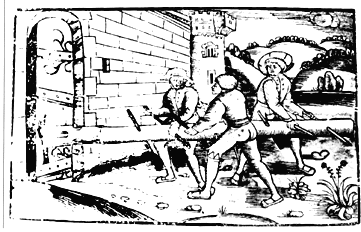

The convent is dissolved by the reformation
1526 October 22nd, during the synod in Homburg Hessen votes for the reformation. The Haydau convent is dissolved and its ground becomes farmland of Philipp the Generous. The nuns return to their home towns. It was before Luther and the reformation that it was tried - during the synod of Homburg - to reform the monasteries, to eliminate the immorality and the worldly way of life. Before 1500 many monasteries had a bad reputation, especially the one of Eppenberg near Mittelhof where the count expelled the nuns. Ludwig l "The PeacefuI" handed over the convent Eppenberg, where the Augustinus nuns had worked since 1219, to the Kartäuser monks of Erfurt. Their monastery had been dissolved like Haydau in 1527 and the last prior there, Johannes Lening, became a Protestant pastor in Melsungen and a well-known adviser of Philipp The Generous.
In 1493 count Wilhelm also expelled the Zisterzienser nuns of Haydau because of their "worldly way of life" and handed the convent over to nuns from Kentrup (Mark Brandenburg). Just before, there had been a visit of the convent by the abbot of Walkenried (Harz). For a second time the convent was highly esteemed; many daughters of aristocrats came here. Convent and chapel of "Heida" were visited as places of pilgrimage, in 1514 even by the count and the citizens of Kassel who bought letters of indulgence. The count's wife Anna, a duchess of Braunschweig, wrote in March 1514:
"Now it has happened that my dear husband (Wilhelm residing on the castle of Spangenberg) decided to have a pilgrimage against the pagans. Many people of Kassel had just been in the convent for indulgence." Though being highly esteemed, the convent had become very poor. We know this fact from the "begging letter" of abbess Elisabeth, mentioned previously.
From the documents we know the names of last nuns and the value of their compensation and pension they received after leaving the convent (1527/28). Most of them returned to their families and home towns. Count Philipp had ordered either to give them back their property or money for becoming a nun (25 guilders) or to return it in an equivalent of a pension. Many of the former nuns were aristocrats' daughters of Nordhessen. There is a note that 34 of Haydau's nuns were non-aristocrats. It is well possible that some nuns had run away earlier like, for example, the ten from the Saxon convent Nimbschen. Among them was Katharina v. Bora, Luther's later wife. The rest of the convent's fortune was then used for the poor, for schools, churches, paying teachers and pastors, hospitals, especially in Melsungen and Spangenberg. At last it was spent for the foundation of the world's first Protestant university (1527 Marburg). Haydau paid 1820 guilders annually, this corresponds to 40-50.000 marks today. (1991)

Reconstruction into a hunting castle by count Moritz
| 1606-08 | Construction of the economic buildings
| | 1616-19 | Reconstruction of the convent into an adjoining residence called castle of Haydau including a park, pyramid oak, wall, an interior garden, master builder was colonel Heinrich v. Siegroth, Orders given by count Moritz
| | 1617 | Tower with portal at the church of Haydau | "Noblest main building in 1617"
In 1527 the convent Haydau was dissolved and became a manor. The ruler wanted to change it into a "firm house" and summer residence. A gardener created new gardens that changed to the later park. Haydau became the countess Julianes property and she ordered colonel Heinrich v. Siegroth to organise the renovation according to Sketches by count Moritz the Learned. (1616-19). Before that (1606-08) the agricultural economic buildings and castle court room in the east wing were built. In 1614 we read in one of Moritz' notes: "Heida shall be the noblest main building this year! We must talk to our master builder because the building has to be finished till Petri's day (could be 29th June)". The roof of the building on the west side of the cloister was removed: Hs. Noll was to reuse all suitable timber. Moritz also ordered how to reuse the old clay and bricks. His Orders were competent in all details. There were two rooms, one anteroom for the servants, a second and two others. A quadrangular tower was built between the church and the annex; there was a big dock with a striking mechanism and two large pointers that were ten feet higher than the roof! The hall itself remained, but in the back part the kitchen for the sirs was built as well as a big bed (3,50 x 1,80 m). Between the vaulted hall and kitchen there was the secretary's place. Next to it there were two rooms for the cooks where they could store food. He thought of all. Above the vaulted hall a second one was built as large as the first, called "hall of angels": To build a room, all of wood from fir." The former Gothic Windows were replaced by rectangular ones. In 1619 a splendid fireside was installed in the hall.
The baroque ceiling frescos of the "wooden ton" showed angels with flowers and palms -the hall of angels. From the outside the castle was built from stone but in the yard all was built from wood. Inside the church galleries were built. A little "summer residence" was created, the water was led from the gutter through a flow-off below the mansion to today's park. From summer residence to Haydau
At last, count Moritz did not only remodel the convent into a little castle, but also created the little "summer garden" in the interior convent garden and a big one outside: the beginning of the today's park. In 1617 the flowing off of the gutter" was subterranean and led through the garden and the surrounding wall. A deep well was drilled, and as a draw well it helped to get enough water for the garden. Trees were planted and surely the pyramid oak which became well-known all over the land. So it would be about 375 years old. One oak, however, that is considered "saint" is older, nearly 560 years. It is called "mother of the pyramid oaks" and is found at Babenhausen in Rodgau near Dieburg.
The gardeners of court belonged to the notables of Morschen. Members of the noble family were godfathers to their children, for example v. Baumbach of Binsförth, gardener of court in Kassel, pastors, civil servants. In 1682 a gardener is mentioned, in 1685 master Jakob Schöne. In the annals of the church they are titled "Master" like pastors or other noble guests, gardener Wichdorf, 1695 Hrch. Mangold, 1713 Johs. Brache, 1717 H. Harbodt...
 | 1690 | Reconstruction of the mansion, the park and building of the Orangery
| | 1694 | Entrance to the main court with bars | | 1695 | Orangery | | 1696 | Mansion | 17th Century: In spite of all alterations the ground plans did not change in their main points. The baroque striving for symmetry is reflected in the mansion that was built at the end of the 17th Century. An adjoining building that apparently pre-existed was reshaped by annex and reconstruction to a typical baroque building. The park of the convent obtained its baroque style. The pyramid oak which can still be admired in its majestic splendour was planted. The orangery with its cantilever timbering roof was built as the winter quarters for the subtropical Mediterranean plants.
 | 1830 | Haydau becomes a state domain | | 1830 | instead of a princely residence Haydau becomes a state domain | The domain of Haydau included the castle with church, yard and place, the tenant's and count's apartments, orangery, barn with gateway, hen house, shepherd's house and stables, distillery, administrator's apartment and the pigsty (later Heinzerling Company) together with 5 acres ground. The mansion, today town hall, was called the tenant's apartment. The names for the ground of Haydau: Hopfengarten, Klarwiese, Riedwiese ("near the railway"), Nun, Giese, Saurasen, Kappelberg, Lohrwiese, Geidelbach, the summer garden beside and behind the castle and the fruit garden behind the economic buildings at the road and Amtsgarten, this comes to a total of 595 acres. When Kurhessen was dissolved in 1867, the state owned "the house, castle (320 St. fl.*), count's dwelling house (50 St. fl), gardener's dwelling house (80 St. fl), a tax-barn (4 St. fl.)a dwelling house with two solid floors, three barns and stables called Meierei (administrator's dwelling house) (400 St. fl.), shepherd's dwelling house (40 St. fl.), i.e. a complete tax value of 894 guilders. In addition to this there was a tax value of 6692 St. fl. for 509 acres of fand. * St. fl = tax due in guilders
 | 1881 | A man with a famous name came to Altmorschen: Johann Pestalozzi | | 1881 | Tenant Pestalozzi (founded a cigar factory, lime factory, Tuffsteingrotte in the park constructed, Raiffeisen
| | 1890 | Dairy of Haydau | His excellent reputation and his famous name were well known when Johann Pestalozzi, a major in the Swiss army, became a tenant of the Prussian state and leased the domain of Haydau.
Much good was expected from the new tenant for the domain of Haydau and the community, for he was a grandnephew of the famous Swiss educator and social reformer. Immediately, he was considered to be an entrepreneur, a man with a deep religious feeling and social responsibility. The well-tended park and a Basalttuff-creation jokingly called "Altmörscher Herkules" (referring to the gigantic Herkules monument from the same material in Kassel) were based on his ideas and remodelling. Even more important, he was one of the founders of the Raiffeisenkasse and of the dairy of Haydau. In addition, he financed from his own funds a factory for beet- root-juice, a factory for weaving reed and a big lime furnace on today's Raiffeisen property near the railway line. The lime was brought from the Rangengrund at Eubach. Near the Station bricks were produced. The factory for weaving reed went bankrupt in 1906: the hard-working man had overestimated his limits.
All what would have been a blessing for the village, the trade and the industry in the region "was stolen from the good-natured man and too confiding philanthropist by unfaithful farm hands and servants". So all his possessions were lost. In 1900 everythinq was sold in an auction, the property was purchased by Raiffeisen and Johann Pestalozzi moved away bitterly.

| 1938 | Dissolution of the domain | | 1938 | The domain is reorganised and changed to a farming settlement | | | The first work-camp for female workers in Melsungen is set up in the mansion in Altmorschen (1937). The workers were trained politically, taught housekeeping and later they helped with agriculture.
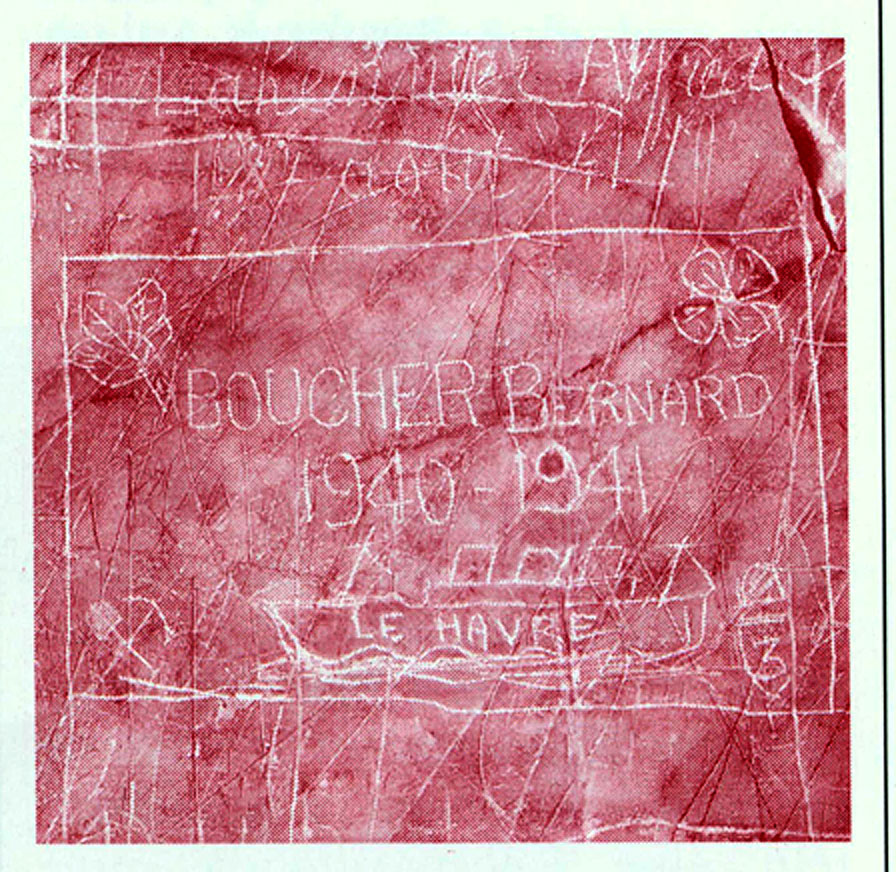 The motor way ("Reichsautobahn"), the military training areas and airports used a considerable part of the agricultural area. The farmers were offered property in exchanae, in part out of the state-owned domains. Thus, the domain of Haydau at Altmorschen was subdivided into eight farms and a commercial nursery garden. It was given to farmers who had to leave their home towns near the "Rhön" motor way and the military training camp Schwarzenborn. The motor way ("Reichsautobahn"), the military training areas and airports used a considerable part of the agricultural area. The farmers were offered property in exchanae, in part out of the state-owned domains. Thus, the domain of Haydau at Altmorschen was subdivided into eight farms and a commercial nursery garden. It was given to farmers who had to leave their home towns near the "Rhön" motor way and the military training camp Schwarzenborn.
Many prisoners of war from Poland and France came to Morschen in 1940. They had to work in the factories and in agriculture to substitute for the men who were fighting the war. Part of the prisoners were put into the convent buildings.
On the property of Raiffeisen sheiters were built where the workers of the destroyed Klöckner-Humbold-Deutz Company in Cologne continued production. In part of the buildings a storage room for "air detence material" was established, near the church there was a place for collecting hay and straw.
Settlers were supervised by the Hessian Home Company from Kassel, which had to move to the convent buildings after the bombing of Kassel (1943-1946). The office of settlement was organised by the office of culture in Eschwege. A great number of fugitives and resettlers, especially from Sudetenland find a new home here.
 | 1982 | The mansion becomes the town hall of Morschen | | 1982 | September, 2nd: opening of the town halt in the mansion. | | | After a sensational donation, the convent was private property of a real estate Company (1980-85) which wanted to set up a senior citizen home.
Just at this time, subsidies of DM 400.000 were granted by the Federal Government and the Land of Hessen for the reconstruction and re-development of Haydau.
Since these funds could not be given to the private owners, the community was to take action. In spring 1980 the local government decided to re-develop the mansion and to make it the town hall of Morschen. It took more than two years of reconstruction, extension and rebuilding, always respecting the convent as a historical monument. On September 2nd 1982 the "new" town hall was handed over to its new destination. The community only had to pay 160.000 DM.

Convent church completely renovated
On July 4th, 1983, a divine Service of praise and thanks was celebrated. Propst Albrecht gave the sermon when the Protestant Christians of Altmorschen took over the convent church. The renovation in the interior came up to 110.000 DM and included new painting, and carpenter work worth 50.000 DM and new slabs of sandstone for the choir room and the anteroom. The church of the Land Hessen-Waldeck is acknowledged for investing about 250.000 DM in a new organ (1977) and in the renovations during the past few years.
The church of Altmorschen had last been renovated in 1962. In those days the heads of the church did not agreed with the plans of the Building Authorities, therefore some works, for example the painting, were only partially done. Elements of modern art had taken much from the mediaeval character of the church.
Before the new renovation, the heads of the church had developed outlines and had subdivided the project into three parts: The first was a speciat entrance hall which should give shelter from the wind. The new wooden fittings were integrated into the mediaeval form of the arches. This part is considered the best of the reconstruction. Below the early Gothic vault of the organ gallery a room without any seating was built. The idea was to remind of the simplicity of the former Zisterzienser church. Through two early Gothic arches the view opens to the church. It is dominated by the ascending Gothic architecture, the simple paint, the emphasis on the sandstone arches which subdivide the room. The rediscovery of old, carefully hewed archways in the southern wall was of special value. Thus the wall that used to be dull now has an impressive feature.

Beginning of the examination and redevelopment
In 1985 immediate action was initiated by the Land and community to preserve the representative monument "Convent Haydau" from total collapse. The deterioration of the building had reached a point that there was no time to think about future use before initiating the necessary measures to save the convent. By now, the redevelopment of Haydau has become a model for interdisciplinary cooperation in restoration: • experts evaluated the historical documents that have been written or given by oral tradition
• restaurateurs examined plaster and paint
• archaeologists examined the ground in and around the building
• experts determined the historical construction of walls, ceilings and floors
• civil engineers examined the site and the girders
• experts supplied facts on the physical and chemical conditions of the construction. The joint financial effort of the Federal Government, the Land of Hessen and the community, it is certain, that the renovation of the Haydau convent will continue and the historical land mark will soon be re-established. 1990: The German Foundation for preservation of historical buildings and monuments becomes the responsible body for the sub-foundation "Convent Haydau". The Organisation is in the hands of the "Association Convent Haydau e.V".
Use of the Haydau Convent Since the future use of the Convent has not yet been formally established, the interested citizens have the possibility to participate in shaping the cultural life of the region. Surely the annual park festivity will have a new quality for the redeveloped convent provides an area of 6000-7000 m2.'
In addition, Haydau Convent will be extended and become a centre of culture and communication, an appropriate aim for this historical monument in the centre of Germany. The following uses are possible: Museum of the convent: Museum/exhibition of Haydau's history Culture: concerts
theatre
readings of poetry
art exhibits Science: summer university
adult evening classes
seminars
meetings and workshops Communication: national and international conferences
festivities/anniversaries
church life
club life
family celebrations The yard of the convent has a special atmosphere for theatre and other cultural events. Suggestion: Theatre rooms for rehearsal
performances in the yard Suggestion: Parish organisation of community events near the church Suggestion: Hotel building a 100-bed-hotel in the domain buildings Even before finishing the complete restoration, parts of the redeveloped buildings will be revived with a variety of events.
 |